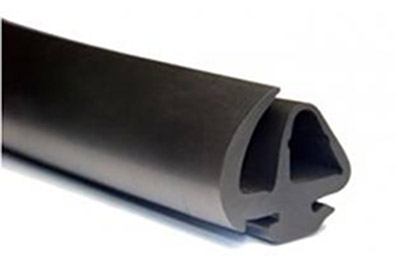
How Do Auto Manufacturers Use Rubber Molding?
Rubber is a popular material in modern automotive design and is used in different components. At Clark Rubber and Plastic, we offer rubber molding for brakes, transmission systems, engines, steering, ac, clutch assembly, solenoid valves, and more. Rubber components are lightweight and provide shock absorption found across the car. Here are four ways auto manufacturers use rubber:
1. For Bumpers & Bushes
Rubber bumpers and bushes offer shock absorption and can minimize the damage caused by a collision. Auto manufacturers use natural and synthetic rubber-like silicone, urethane, butyl, and polyurethane. Rubber bumpers come in various shapes and sizes and reduce vibration, movement, and impact. Bushings are used to absorb shock and provide spacing between parts.
Rubber bumpers and bushing offer sliding resistance and protect the surfaces from skidding and scratches. Other uses include vehicle cooling systems and heavy-duty dock applications. Clark Rubber and Plastic provide rubber parts in different colors, so you can find the perfect choice for each car. The products feature unique properties, including hardness and elasticity.
2. For Seals & Gaskets
Rubber seals and strips are common in car doors and windows. They’re used in various other parts to create a watertight seal, like in the case of O-rings. Rubber seals are waterproof and come in all shapes and sizes customized for the application. The material is resistant to abrasion and chemicals, making it perfect for different settings. Rubber is durable, flexible, and an efficient insulator.
We provide custom rubber seals for vehicular openings, including roof rails, cowl, window pillars, and divisions. Clark Rubber and Plastic manufactures premium quality rubber gaskets for car engines. Head and manifold gaskets prevent coolant, oil, and air leakage from the combustion chamber and gunk from the transmission.
3. For Engine Mounts & Housing
Rubber engine mounting is vital in isolating, absorbing, and reducing vibration. Car engines work at high speed with multiple moving parts that can cause shaking. Without rubber mounting, the vibration is transmitted to the car’s body and the passenger.
The vibrations can increase wear and tear, so rubber mounting and housing are beneficial for the vehicle’s function.
Our rubber motor housing and mounting dampen noise and vibration, balance energy absorption, and reduce downtime. The housing is resistant to various conditions, including high and low temperatures, acids, chemicals, flame, oil, water, weather, tear, and abrasion. We offer different types of rubber that last several years.
4. For Diaphragms & Hoses
Car diaphragms act as a barrier between chambers and can move up or down, depending on the pressure difference. Diaphragm pumps are standard in mechanical fuel pumps. Rubber is the perfect material for car engine diaphragms and can last several months or years. They are waterproof, durable, and efficient.
Nearly all hoses used in the car transmission system are made from rubber. The fuel and brake fluid feed hoses use rubber, which is efficient under high temperatures and chemicals. Rubber hoses are durable, flexible, and less vulnerable to cuts and abrasions. They supply water, oil, and other fluids to different parts of the car, including the engine, radiator, and brakes.
Dependable Rubber Molding for Cars
Are you looking for top-quality rubber molding for your customers? Clark Rubber and Plastic is an experienced manufacturer of rubber and plastics used in various industries, including automotive, solar, and appliances. We can provide custom rubber parts with unique properties for your components.
